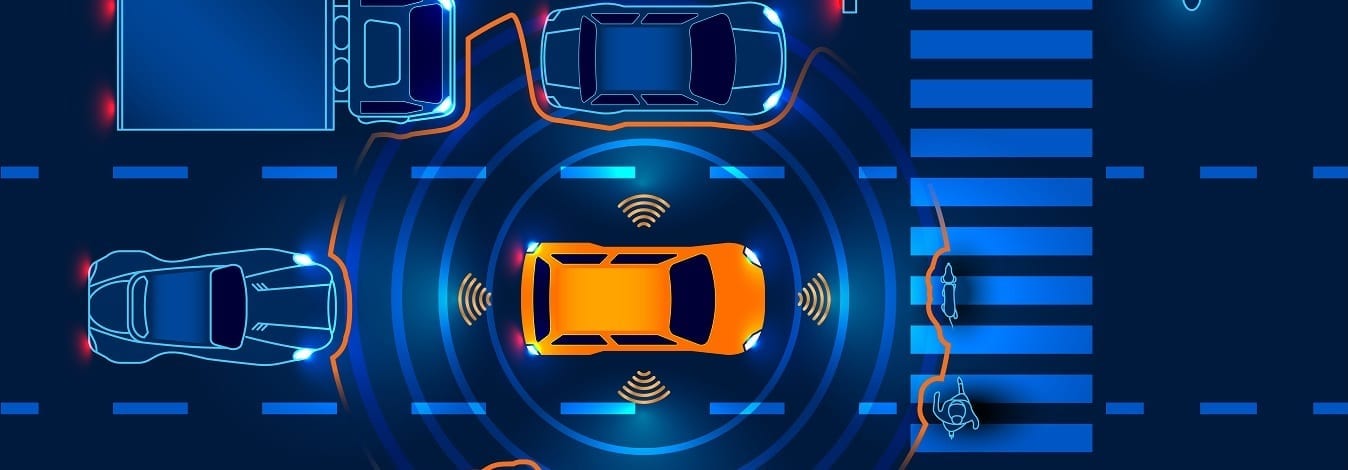
Autonomous cars are currently being trialed all over the world and their eventual widespread implementation could revolutionize not only the transport industry, but the way we travel in general.
However, recent high-profile accidents involving autonomous vehicles have sparked debates as to how safe driverless cars really are. Uber has recently put their autonomous vehicle trials on hold after a fatal accident in the US, while Google has put safety drivers in their driverless cars to ensure that someone is able to take control should things become unsafe.
So, is the fear around fully-autonomous vehicles warranted?
Without a doubt, handing over control of cars and other vehicles to non-human intelligence is inherently risky, machines aren’t exactly known for their human-like tendencies.
Although, there are those who argue that this is exactly why autonomous vehicles could help create safer transportation overall, through the elimination of human error. Human error can come in many forms and, according to a 2017 study from the US National Highway Traffic Safety Administration, is the cause of 94% of car accidents.
Emotional responses when driving can often be impossible to avoid and while they are not the cause of every incident involving cars, they can and do play a role in increasing the risk of accidents while driving.
Autonomous Cars Safety Record
So, how safe are autonomous cars currently? There have been multiple incidents involving driverless vehicles, many of which have garnered much coverage in the world’s media. However, the majority of these accidents have an interesting shared theme.
In 2017, Waymo, who you may remember formerly being Google’s Self Driving Car program, had driven over 2 million miles in the US and only ever been at fault in a single accident. Accidents involving Tesla and Uber vehicles being at fault are also somewhat rare when accidents do occur.
The vast majority of reported accidents were caused by inadvertent human error, rather than a fault with the autonomous vehicle.
Although this doesn’t seem to have made too much difference to the way the public feel about driverless cars, as shown in a 2017 Deloitte study which showed that three-quarters of Americans do not yet trust autonomous vehicles.
And this is not surprising, very few new technologies are accepted into society without question.
Experts also argue that care should also be taken when comparing how safe driverless vehicles are in comparison to human drivers as they are not exactly a like-for-like trade, with the wider effects of such a swap needing careful consideration.
The autonomous cars being trialled over the last few years have performed fairly well with regards to safety, so far. This does not, however, mean they come without hazards.
Implementing Safety
Using technology to replace human drivers comes with a number of challenges that need to be overcome in order for autonomous cars to be as safe as they need to be.
In order to do this, several different technologies will need to be built into autonomous cars to create substitutes for human perception, interpretation and reactions.
The Internet of Things, as well as next gen wireless communications technologies such as 5G, are being combined with cutting edge technologies in the fields of detection, vision, and automation systems in order to build the technological architecture required for safe, efficient and reliable performance.
Real-time data transmission is essential for the sharing of information among connected vehicles and systems as split-second decision making can often be the difference between a collision and a close call.
For this reason, failover systems are also an integral part of the design of many autonomous cars, as is the need for intelligent connectivity.
The ability to identify and utilize the best connections for priority data will also look to address the need for consistent, high quality network connections. However, due to this same connectivity, these systems themselves will also need to be protected from external access from unauthorized agents.
Without such security measures, it would be entirely possible to hack autonomous cars.
The Future of Autonomous Cars
While the development of unhackable, super-intelligent autonomous vehicles is highly unlikely, and potentially undesirable, there are technologies on the horizon that have the potential to truly realize the potential of autonomous cars and vehicles.
City-wide intelligent Edge Mesh networks, powered by other networking tech such as SD-WAN, could provide the connectivity required to provide the data transmission capabilities required by both autonomous vehicles and the intelligent transportation systems they would communicate with.
Artificial intelligence (AI) could also play a key role in autonomous vehicles, with experts and commentators discussing its potential in everything from securing autonomous vehicle networks to designing, configuring and deploying it.
With developments and progress within AI becoming more and more frequent, it seems likely that this technology will find itself integrated within autonomous vehicles for the foreseeable future.
In order to create the safest driving conditions for everyone on the road, human and non-human, both kinds of drivers will also need a basic understanding of each other.
Humans can often be guilty of lapsing on certain standards and slipping into certain bad habits, machine intelligence will not do this. While human drivers might predict the bad behavior of others, this could prove very difficult to teach an autonomous car.
Autonomous vehicles could very well be a much safer mode of transportation, once the technology that enables it has be refined, however, it would appear that it is its inability to deal with the unsafe behavior of others that is proving to be a difficult challenge to overcome.






